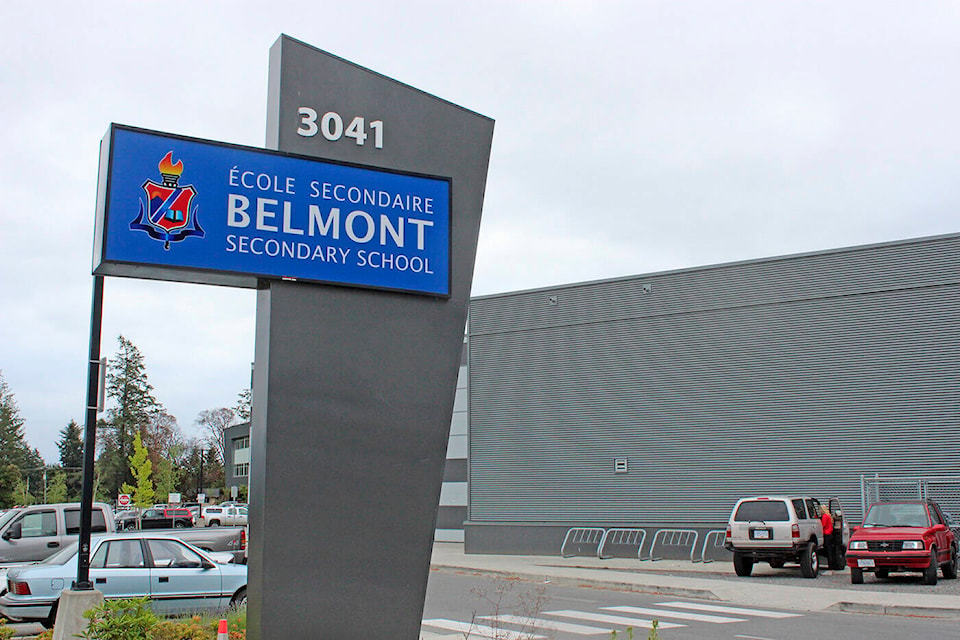Canadian researchers hope bringing hands-on, real-world experience of earthquakes to the classroom will bolster interest and foster resilience.
More than a dozen Vancouver Island schools feature a Raspberry Shake and associated programming thanks to the SchoolShake program. SchoolShake is installing a network of Raspberry Shake seismometers in schools to provide a real-time feed of ground shaking and earthquake locations.
This program strives to give students and teachers the chance to learn about earthquakes and participate in a large-scale community science experiment. The Raspberry Shake is a low-cost, professional-grade seismograph anyone can use to record and visualize both natural and human activity.
“They’re wonderful for outreach. They’re simple, they’re inexpensive and they’re easy to use,” said Andrew Shaeffer, research scientist in earthquake seismology at Geological Survey of Canada and adjunct professor at the University of Victoria.
He’s one of three who lead the project, alongside Camille Brillon, a seismologist with the Geological Survey of Canada and a research associate at UVic, and Ed Nissen, a professor and Canada Research Chair at UVic.
READ ALSO: Researchers reveal earthquake fault line across Saanich Peninsula
Conversation around the initiative started in mid-2020, as an outreach idea to make seismology more available to more people, Shaeffer said.
Vancouver Island sits atop the Cascadia Subduction Zone and the idea is to spur awareness and interest in areas where there are routine earthquakes and potential for sometime impactful – but they’re rarely felt. Unlike places like Japan, where the shaking is routinely felt, Island residents are rarely shaken up over an earthquake and the potential for tsunami sometimes becomes a punchline. Kids learn the concept of “drop, cover and hold on” during earthquake drills – but don’t know much beyond that.
The idea of awareness and education as a tool in resiliency was illustrated during the 2004 Sumatra tsunami, Shaeffer said.
Did you hear 4 loud booms near Victoria, BC yesterday? A number of the @SchoolShake @raspishake seismographs recorded them. These are not earthquakes, but likely related to Naval activities near Metchosin. pic.twitter.com/xlfYSJoNFS
— SchoolShake (@SchoolShake) September 26, 2023
A British girl on holiday there had just learned about earthquakes and tsunamis. While people stood in awe of the tide dramatically pulling away, she knew what was happening and is credited with saving several hundred people, Shaeffer said.
They started setting up the computers in the homes of friends and colleagues in 2021, just to validate it could be done.
“Just to validate we could do it,” Brillon said. Some of those remain, including one at the Hakai Institute.
There are some 2,200 Raspberry Shakes running globally. The first school shake went into Belmont in May 2022. Now there are 14 in schools across Greater Victoria and one in Campbell River.
READ ALSO: Research off Vancouver Island looks to uncover what makes megathrust earthquakes tick
“It is a hands-on project. The instrument is actually in the school,” Brillon said. “The goal is to find educators that are interested in using them in their classes. This is provided free to the school. We do realize resources are slim.”
They learned from teachers during a professional development workshop that many didn’t feel well enough prepared to lead the subject. They just didn’t have the necessary resources, Brillon said. So the team developed classwork, based on science and historical knowledge for Grade 8 and 10 where the topic is potentially part of the earth sciences curriculum.
Yesterday's M4.3 earthquake deep beneath the Puget sound was widely felt here in Victoria BC and beautifully recorded by the @SchoolShake network. Here is the seismogram from @glenlyonnorfolk showing very clear P and S wave arrivals pic.twitter.com/vHnNBDGteC
— Dr. Edwin Nissen (@faulty_data) October 9, 2023
“This program is a resource for (teachers). We want to make this science – in the setting where we live – more accessible to everybody,” Shaeffer said.
They also took some inspiration and lessons from the Vancouver Island-based Weather Station Network developed by Andrew Weaver and Ed Wiebe at UVic. That team installed simple weather stations and created classroom resources for schools up and down the Island about 20 years ago (the first station was installed at the Ian Stewart Complex at UVic in 2002). Wiebe still maintains that system through UVic’s School of Earth and Ocean Sciences, resources have waned. Learn more about that program at victoriaweather.ca.
READ ALSO: Oak Bay fire hall monitor helps track earth’s movement
An added benefit of the School Shake program is the ability to incorporate data into the existing network of earthquake monitors and alert systems.
Alongside spurring interest and knowledge in the field on a resiliency level, the team hopes to appeal to young people who might look at going into the field – work that combines science and being outdoors.
While still looking to fund more broadly – the program is run by three people off the side of their desks – the Campbell River classroom is just a first step in the slow drift up Island.
“This is just a starting point with so much growth potential,” Brillon said.
The team hopes to have a Haida Gwaii school Raspberry Shake up and running by February.
Visit schoolshake.ca to learn more about the program.
READ ALSO: Vancouver Island slides west, tremors could signal tectonic shifting
